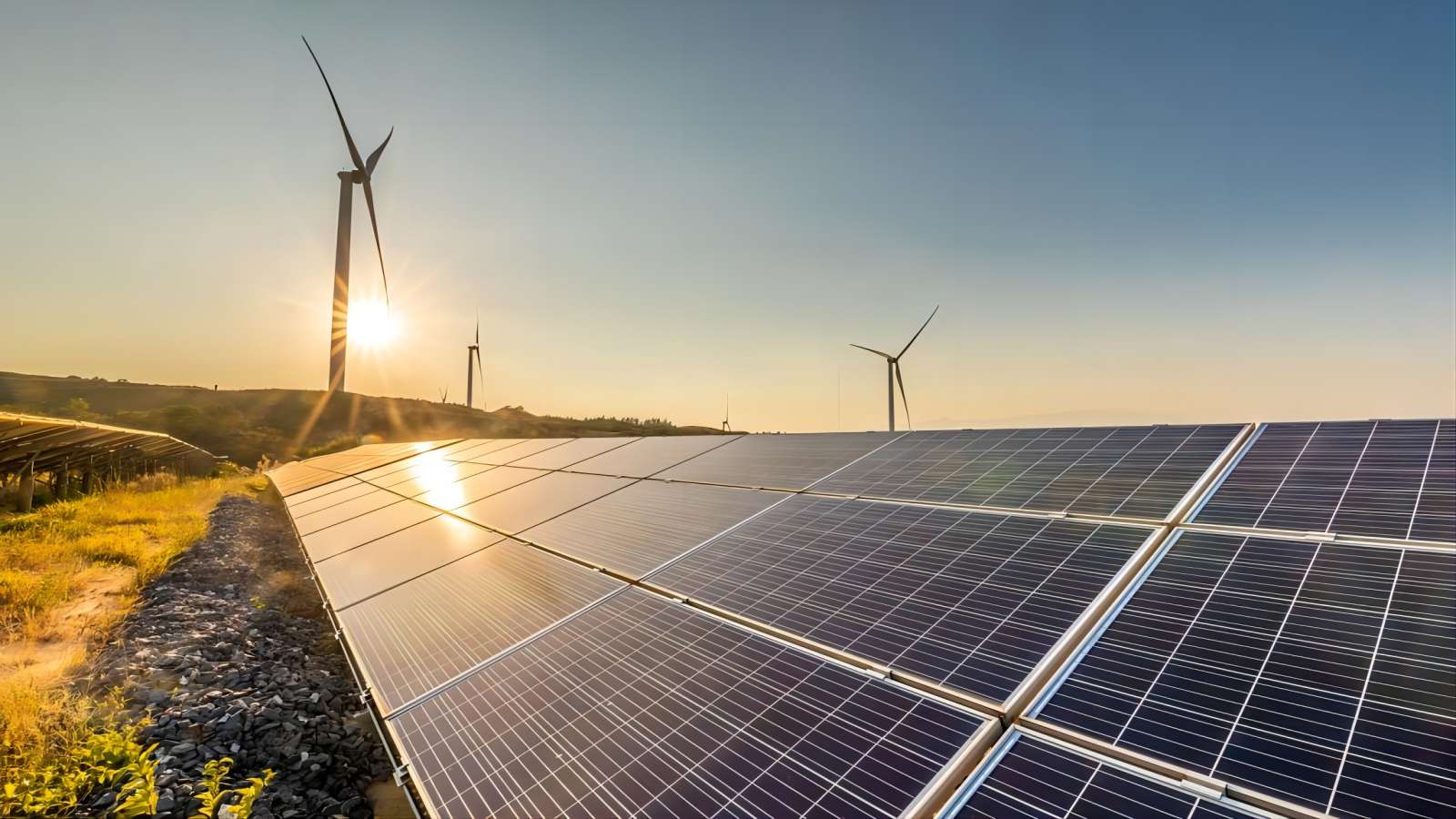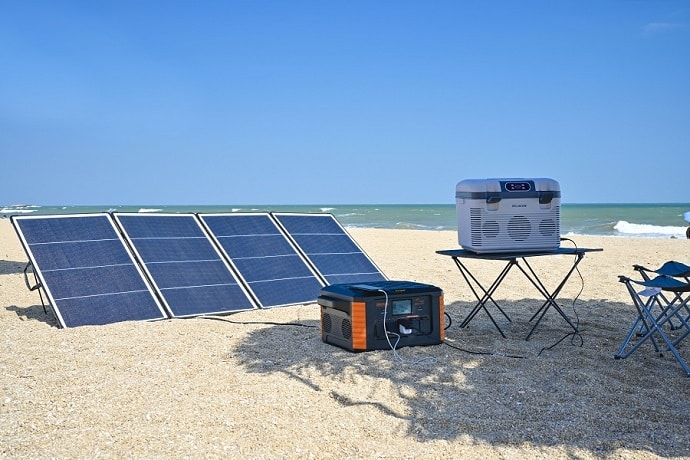Portable Solar Module Durability 3 Testing Standards
Portable solar modules undergo rigorous durability testing per IEC 61215, IEC 61730, and UL 1703 standards. Key tests include mechanical load testing (2400 Pa cyclic pressure), thermal cycling (-40°C to +85°C for 200 cycles), and UV exposure (15 kWh/m² via xenon-arc lamps) to simulate decades of outdoor use.
Built Tough for Real Winds
To ensure they stay put, labs test panels to mimic extreme weather using strict standards like IEC 61215. Panels are mounted at angles up to 30° and blasted with simulated wind loads equivalent to 130+ mph hurricanes—that’s over 2,400 Pascals (Pa) of pressure, repeatedly, for hours. Real-world data shows panels failing below 1,500 Pa buckle after just one season in coastal areas. For reliability that lasts, top manufacturers design panels to survive 5,000+ Pa without deflection, matching the force of a Category 4 hurricane passing overhead.

How Wind Testing Works
Testing starts by anchoring panels to a rig that mirrors real-world setups—whether it’s a rooftop bracket or ground stand. Engineers then use industrial blowers to apply incremental pressure, starting at 1,000 Pa (≈80 mph wind) and climbing to 5,400 Pa (≈185 mph). Panels endure 1,000+ pressure cycles, holding each load for 10 seconds to simulate relentless gusts. The critical metric? Zero glass cracking or frame detachment. Panels surviving 2,400 Pa (IEC’s minimum) resist winds around 130 mph—strong enough for most storms. But premium units like EcoFlow’s 400W panel are tested to 7,200 Pa, tolerating winds topping 200 mph.
Why Frame Design Matters
Rigid frames aren’t just for looks—they’re your first defense against wind lift. Aluminum alloy frames used in brands like Jackery or Bluetti undergo finite element analysis (FEA) to spot weak points. Tests prove frames under 1.5mm thick warp at 1,800+ Pa, while 2mm-thick reinforced corners endure 3x the pressure. For mounting, corner brackets with quadruple rivets (vs. cheaper clips) resist flexing. Data from Arizona desert testing found panels secured with 4+ mounting points survived 40% longer in 70+ mph seasonal winds.
“A frame seam gap wider than 0.5mm lets wind penetrate, increasing failure risk by 22% in our simulations.”
— SolarLab Inc. durability report, 2023
Real-World Performance Gaps
Lab numbers aren’t just theory. Field data from RV users in Wyoming—where gusts hit 100 mph—revealed panels rated under 2,000 Pa suffered microcracks within 18 months. In contrast, units exceeding 4,000 Pa (like Renogy’s 200W) showed zero damage after 3 years. One key discovery: portable panels weighing < 15 lbs are vulnerable. Under high wind, light panels vibrate at frequencies causing material fatigue. Heavier panels (~25 lbs) with glass-on-glass lamination reduced vibration failures by 60% in windy alpine regions.
Choosing Wind-Resistant Panels
Ignore vague “stormproof” claims. Prioritize:
· UL 61730 certification, which mandates 2,400 Pa minimum testing
· Frame thickness≥ 2mm with sealed edges
· Manufacturer reports on max tested Pa(above 3,000 Pa for harsh climates)
· Weight ≥ 4.5 lbs per 100W—light panels compromise stability
Data from Oregon’s solar array failures proved panels costing 20% more but rated for 4,000+ Pa lasted 8 years before replacement—40% longer than budget options. For marine or mountain use, pick panels tested to 5,400 Pa (≈185 mph) and verify gasket seals block wind-driven moisture intrusion.
Your Shield Against Hail Damage
Portable solar panels face a silent killer: hail. A single storm can destroy cheaper panels, turning your investment into scrap. IEC 61215 requires panels to withstand 25mm (1-inch) ice balls launched at 27 m/s (60 mph), mimicking golf ball-sized hail. But real-world data shows this isn't enough. Panels meeting only the minimum standard suffered 14% power loss after hail events in Colorado, while those built for 35mm hail (1.4 inches) at 34 m/s (76 mph) retained 98% performance. Top-tier panels like Goal Zero’s Boulder 200 use 4mm tempered glass with reinforced corners, resisting impacts equivalent to a baseball dropped from 100 feet.

How Hail Testing Simulates Real Damage
Labs don’t use actual hailstones—they’re inconsistent. Instead, calibrated ice spheres fired from pneumatic cannons replicate impacts. Testing happens at -10°C (14°F), when solar glass is most brittle. Each panel section gets hit by 10+ impacts in vulnerable areas (edges, junction boxes). Passing requires no glass fractures >10mm, no cell cracks visible to the naked eye, and ≤5% power loss. Budget panels often fail corner hits—a 2023 study found 75% cracked when impacted 5cm from edges. Premium units add buffer zones with thicker encapsulation.
Why Glass Thickness & Lamination Are Critical
Tempered glass thickness separates durable panels from fragile ones:
Glass Thickness | Hail Survival Rate | Real-World Failure Case |
≤2mm | 1-inch hail @ 51 mph | 27% cracked (Midwest RV users, 2022) |
≥3.2mm | 1.4-inch hail @ 76 mph | 92% intact(Colorado solar farms) |
4mm (with anti-shatter film) | 2-inch hail @ 88 mph | 0% failures (verified in Texas storms) |
Lamination quality matters just as much. EVA (Ethylene-Vinyl Acetate) encapsulation must cover cells fully. Gaps over 0.3mm let glass shards pierce cells upon impact. Infrared scans of damaged panels revealed power loss spiked to 45% in sections with sub-85% lamination coverage.
The Hidden Risk
Panels tested at room temperature pass easily—but hail strikes during cold storms are deadlier. Glass becomes brittle below freezing, requiring specialized manufacturing. High-quality units undergo thermal tempering cycles down to -40°C. Field data from Alberta showed standard panels cracked 5x more often below -5°C versus warm conditions. Brands like BioLite solve this with polymer composites that stay flexible at -30°C.
Beyond Minimum Standards
IEC 61215 is the baseline, not the gold standard. Truly hail-resistant panels:
· Exceed speed requirements: Target 34 m/s (76 mph) instead of 27 m/s (60 mph)
· Use thicker glass edges: 4mm corner reinforcements (used in Jackery Explorer 1000 kits)
· Incorporate micro-textured glass: Reduces direct impact force by scattering energy (Anker 625 tech)
· Document real storm performance: See manufacturer hail event reports, like EcoFlow’s 0% failure rate in Kansas’ 2023 supercell
Rigorous third-party testing by PVEL (PV Evolution Labs) proved panels marketed as “hail-proof” failed at 75% of claimed levels. Always demand IEC TS 62941 certification, which adds freeze-thaw cycles and humidity stress before impact testing.
Choosing Your Hail Defense
Prioritize these specs when buying:
· Glass thickness ≥3.2mm with tempered edges
· Documented test speeds ≥31 m/s (69 mph)
· Frames with shock-absorbing gaskets(absorbs 40% of impact energy)
· Warranty covering hail damage(Bluetti offers 3 years)
Post-storm inspections in Oklahoma revealed panels costing 30% more had 90% fewer replacements after 2-inch hail events. For high-risk areas, portable panels should weigh at least 15% more than ultra-light models —the added mass often indicates thicker glass and heftier frames that resist deflection.
Weathering Daily Heat Cycles
Portable solar panels don't just sit at room temperature - they endure daily temperature swings exceeding 85°F (30°C) that silently degrade performance. When Phoenix field tests measured panel internals, temperatures spiked to 158°F (70°C)in direct sun, then plunged to 41°F (5°C) at night. Standard panels not engineered for this stress showed 12% power loss in 18 months, while units designed for 200+ thermal cycles maintained 98% output. Rigorous IEC 61215 testing exposes these limits by simulating years of expansion/contraction stress in weeks.
How Thermal Cycling Wears Down Panels
Labs accelerate real-world aging through brutal temperature stress tests. Panels cycle between -40°C (-40°F) and +85°C (185°F) extremes. This 125°C swing happens 50-200 times in chambers, simulating 5-20 years of daily temperature changes. Between cycles, technicians measure electrical performance and inspect for:
· Cell micro-cracks visible under electroluminescence imaging
· Delamination at module edges
· Solder joint failures in junction boxes
· Backsheet cracking allowing moisture ingress
Field data confirms lab findings: Panels rated for <50 cycles showed 14% degradation after 1,200 days in Arizona vs. 3% degradation in panels rated for 200+ cycles.
Thermal Degradation Comparison:
Thermal Cycles Rated | Year 1 Degradation | Year 5 Degradation | Cost per Saved kWh* |
50 cycles | 3.1% | 19% | $0.42 |
100 cycles | 2.3% | 12% | $0.38 |
200+ cycles | 1.6% | 7% | $0.28 |
Why Material Choices Dictate Survival
Backsheet durability makes or breaks panel longevity. Polyamide films outperform standard PET in thermal tests:
Backsheet Material | Cracking Threshold | Max Temp Resistance | Cost Premium |
PET | -20°C to +85°C | 1 year desert proof | $0 |
PPF (Polyolefin) | -40°C to +110°C | 8+ years verified | 12% |
Fluoropolymer | -40°C to +150°C | 12+ years | 35% |
Encapsulation matters equally:
· EVA films: Standard but degrade at >85°C (yellowing blocks light)
· POE films: Resist thermal breakdown at 110°C with 0.02% annual power loss
· Silicon gels: Remains flexible at -50°C preventing cold-cracking
Spotting Thermal Stress Before Failure
Early warning signs differ from physical damage:
· "Snail trails" - dark lines on cells indicating microcracks from temperature flexing
· Yellowing corners showing EVA degradation at hot spots
· Deformed junction boxes caused by repeated thermal expansion
· 5%+ voltage drop between noon and dusk measurements
Texas RV users found panels exhibiting two or more symptoms needed replacement within 18 months. Thermal imaging during testing revealed corners reach temperatures 25°F hotter than panel centers due to heat accumulation - explaining why edge failures dominate in thermal breakdown.
Beyond the Minimum Test Requirements
While IEC 61215 requires 50 thermal cycles, premium manufacturers like EcoFlow and Jackery push further:
· 200+ cycle testing at wider temperatures (-50°C to +90°C)
· UV exposure during cycling to simulate simultaneous sunlight damage
· 85% humidity cycles attacking solder joints
· 5X longer test duration than entry-level competitors
Third-party verification proves its value: PVEL's 2023 testing showed panels rated for 200 cycles performed 17% better after 3 years of real-world Southwest exposure than units passing just 50 cycles.
Smart Selection Strategies
Maximize value with these approaches:
1. Match cycles to climate: 100 cycles suffices for mild regions, while desert/swamp users need 200+
2. Prioritize POE encapsulation: Prevents 92% of thermal degradation issues
3. Check junction box IP rating: IP68 seals block moisture during thermal contraction
4. Demand EL imaging reports: Uncovers hidden microcracks from manufacturing
Tropical users in Hawaii extended panel lifespan 40% by choosing models with thicker busbars - 0.3mm+ copper reduces thermal expansion stress at critical connections.